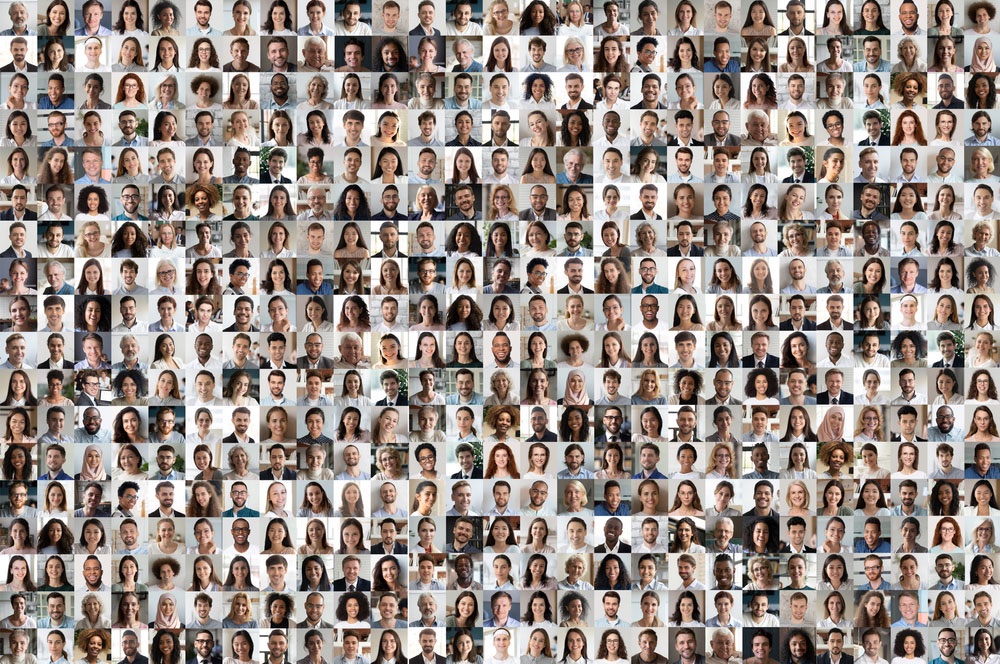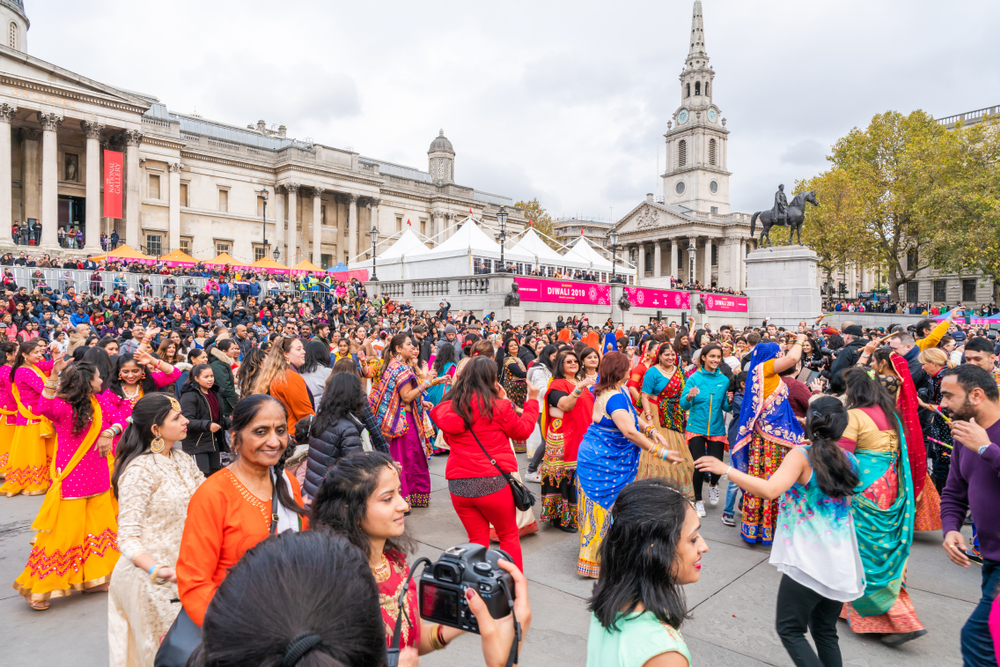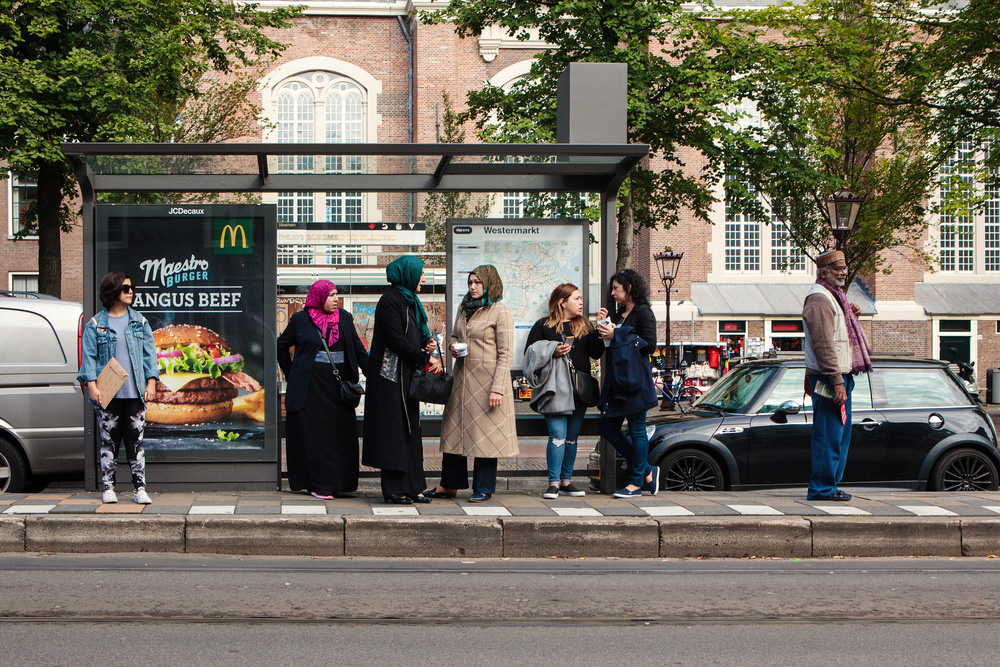Multiculturalism, Interculturalism, Transnationalism and Cosmopolitanism. Interview with Riva Kastoryano

PLURISPACE pertains to the settlement of post-immigrant ethno-religious groups, along with the expression and organization of collective identities; claims for participation/representation and recognition; the role of religion in public space; and the increasing influence of diaspora and transnational politics. Riva Kastoryano—project leader—answers our questions on the genesis of this research project and its intellectual ambition.
What is the genesis of the project and how have the research teams been formed?
PLURISPACE was born from two intellectual encounters and the various exchanges they generated. First, Tariq Modood (University of Bristol) and I were at the American Sociological Association conference in Montréal in 2017, when on the same Presidential panel Tariq Modood presented a paper on “Multicultural nationalism” and I presented a paper on “Transantional nationalism”. We thought that we could confront these two approaches and we organized a workshop in Paris in April 2018 on “both nationalisms”, and beyond.
Second, with Ricard Zapata-Barrero (University of Pompeo Fabra). The comments on Ricard’s paper on “Transnationalism and Interculturalism: Overlaping affinities” published in John Erik Fossum, Riva Kastoryano and Britte Slim (eds.), Diversity and Contestation over Nationalism in Europe and Canada (2018) led us to question the confrontation between normative theories and social realities with regard to concepts such as interculturalism and transnationalism, more specifically in this case on a normative perspective and empirical evidences in the assertion of “overlapping affinities.”
Later on, another discussion between Tariq Modood and Ricard Zapata was published as a debate comparing and/or opposing Multiculturalism and Interculturalism (see Comparative Migration Studies Symposium on Multiculturalism and Interculturalism, 2017).
These debates and exchanges have been an inspiration for HERA (Humanities in the European Research Area) call entitled “Integration and European Public Space”. My previous collaboration with John Erik Fossum (University of Oslo) mentioned above and the European perspective brought the concept of cosmopolitanism into our reflection on public space.
What is your theoretical approach for PLURISPACE?
While most analyses of post-immigrant incorporation have been single-theory-oriented, leading to multiple, contested and controversial interpretations of integration and democratic public spaces, PLURISPACE is looking at the four theoretical concepts—multiculturalism, interculturalism, transnationalism and cosmopolitanism, with regard to the public space as a way to frame issues: in normative terms; in discursive—rhetorical terms, in terms of applied “identity politics”, and in terms of proximity to policy-making processes.
We have all been working extensively on immigration, integration, citizenship and public space with different theoretical, normative, political and sociological perspectives. Tariq Modood is well known for his work on multiculturalism, Ricard Zapata Barrero has published extensively on interculturalism; John Erik Fossum has authored many books on the European Union with a cosmopolitan perspective, and I have myself signed many articles and a book on transnationalism in comparison to diaspora politics in Europe and beyond. Each approach has its own conception of public space, of diversity, equality and solidarity.
PLURISPACE uses the four theoretical perspectives to understand how the multilevel European public space manages diversity.
Our objective is then to evaluate empirically post-immigrant ethno-religious minorities’ perceptions and adoptions of these different normative approaches. This will allow us to clarify the nature and relations among multiple conceptions of integration in the European public space that both overlap and diverge. All four concepts deal with diversity and the strategy of integration in Europe.
Are there divergences and/or complementarities in the understanding of the management of diversity, and the public space among the 4 theoretical concepts?
The four theoretical approaches vary with regard to the aspects of public space that they highlight; in how they frame issues; in level of generality; and in terms of proximity to policy-making processes. Studies on integration and public space have generally confined themselves to one approach and considered its relation to laws and policies and/or as means of claims-making and mobilization. No study has thus far systematically examined how these four approaches are related across different levels or scales of public space. PLURISPACE fills that gap. It devises a scheme for untangling the four theoretical approaches, for making them comparable, amenable to empirical research, and for making clear whether there are complementarities due to the fact that they are designed for different levels/forms of public space.

Celebrating Diwali in London. Copyright: Shutterstock
What are the methodological approaches chosen in PLURISPACE?
The first step is thus to reflect on convergences and divergences among the concepts in relation to Nation-State, Citizenship, Nationalism, the EU (and Globalization)
- First, in relation to Nation-States...
From a multiculturalist perspective, nation states are neither homogeneous nor unitary. They promote national culture within liberal limits and rejecting/incorporating/accomodating group identities on an institutional level and symbolic level (Tariq Modood).
The methodological question is normative: how “should” states accommodate cultural diversity in order to respond to theories of citizenship, equality and justice?
Is the answer to be searched partly in rhetoric, discourses and analysis of applied identity politics (voluntary associations, local organizations, and cultural activities?
As for interculturalism, claims are based on contact and dialogue, and interpersonal relations between people from different backgrounds, including nationals and citizens. It is debated as a policy paradigm turn in diversity management in a “post-multicultural” period (Zapata-Barrero). While multiculturalism focuses on a national level questioning the national identity, interculturalism emphasizes the local level because of the geographical and physical proximity among groups that facilitate dialogue and exchanges. Such an assumption suggests a social link between separate communities settled in one locality.
The methodological question is both normative and institutional, it aims to promote dialogue among people from different background sharing the same public space, and shaping the space through individual interactions. Multiculturalism is focused on how receiving states deal with post-immigrant diversity; interculturalism does the same but is more focused on the city as the unit of analysis.
The use of the term transnationalism in social sciences is associated to the relevance and permanence of the nation-state. The term has little resonance in policy circles or everyday political debates, but reflects an evolution in social reality of migrants’ experience: economic, cultural and political leading to multiple levels of participation. Transnationalism is thus perceived as a challenge to the founding principles of nation-states with regard to territoriality, citizenship and membership in a single political community.
Transnationalism raises more empirical questions than normative questions. As a new approach to the analysis of participation, related to globalization, transnationalism affects how public space is structured within and without national and local public space, which raises the question of boundaries: territorial, cultural and political (Basch and Glick Schiller 1994). Nevertheless, transnational studies that take into consideration the process of globalization as a source of the expression of solidarity and identification beyond borders include also states.
Politically speaking, cosmopolitanism has been considered a possible analytical tool for transforming political and social institutions so as to make them compatible with the core tenet of moral universalism. It bases its reflection on Universal Human Rights, and defends a thin “constitutional patriotism”. Resistance to nation-state refers to European Union (and/or) global reflection on citizenship based on individual rights.
The methodological question is normative, nevertheless similar to transnationalism in the understanding of a public space that is unbounded.

Chinatown in London. Copyright: Shutterstock
- Second, in relation to citizenship...
Multiculturalism and Interculturalim . Both concepts reject the assimilationist approach because of its defense of a historical national homogeneity. For Tariq Modood, multiculturalism considers migrants as co-citizens within a pluralist system in which all identities are respected; political strategies move in this direction in order to reshape the understanding of Britishness. The central normative claim of multiculturalism is that citizenship and national identity must be remade to include group identities that are important to minorities as well as to majorities. This implies the right to be included, to full membership, which includes the sharing of the national-public space or culture and in this sharing, to remake it. Interculturalism as fostering intercultural citizenship (Zapata-Barrero, 2019, and consequently it is seen as an important driver for a socialization process, of culture-making. Diversity is then an advantage and a resource to promote solidarity and reframe a common public culture.
The greatest challenge to the current debate on multiculturalism and interculturalism as a set of policies is the power of transnationalism. On a macro and/or micro level, both multiculturalism and interculturalism are developed as a normative theory, a narrative and political paradigm in response to the management of cultural diversity within the nation-state and/or the city in order to redefine citizenship, nationhood, as well as local and national solidarity. Transnationalism, however, has been developed as an experience of migrants and minorities, settled in different national societies interacting with each other beyond borders. Transnationalism brings to light multiple membership and multiple loyalties—crystallized around dual citizenship—which becomes for immigrants a way to maintain an identity rooted in the home country. Citizenship becomes then an entitlement in the country of residence. Normative multiculturalism and interculturalism raise the question of a single nation and a place (local). With transnationalism, an important question pertains to whether transnationalism will generate a distinct sense of nationhood, non-territorial (Kastoryano 2007), or whether it will borrow from versions of nationalism or cosmopolitanism.
- Third, in relation to nationalism...
For Tariq Modood, multiculturalism is the extension of the concept of national citizenship and of nationalism. He suggests a “multicultural nationalism” as a way “to accommodate British Asian Muslims political assertiveness”. He suggests a “multicultural nationalism” that is only civic in nature because it is based on the recognition of groups rejecting membership as ascriptive, as well as the concept of “Otherness that refers to Ethnicity”. What is the difference between a multicultural nationalism and intercultural citizenship other than a narrative difference since both aim for a civic public space leading to a new dynamic of national identity?
The transnationalist perspective considers that both transnational communities and states create new configurations of nation and nationalism, of territory and power, within globalization. Communities, based on cultural, ethnic, and religious identifications and recognized by states that increasingly rely on transnational solidarities with new subjectivities, are accompanied by the imagined geography that is non territorial and have sparked new upsurges of nationalism –transnational nationalism (Kastoryano, 2018). States on the other hand expand their nationalism to maintain the “power” of incorporation and citizenship, in order to re-territorialize identities here and/or there. Re-territorialization strengthens national sovereignty and the sense of belonging in host as well as home countries, bringing both countries to cooperate for the redefinition of a public space beyond boundaries as for states to compete with transnational forces in order to integrate global public space.

People waiting at a bus station in a city in The Netherlands. Copyright: Shutterstock
- Finally, in relation to EU and Globalization...
While multiculturalism is defined as a normative theory related to the nation-state, interculturalism, transnationalism and cosmopolitanism refer to the European Public space in different ways.
In Europe, the Council of Europe Foreign Affairs Ministers approved the White Paper on Intercultural Dialogue in May 2008, which declares interculturalism as the basis for a European identity. This sentiment is reflected in the official motto “unity in diversity”. The idea is to combine the pluralistic and complex sense of belonging among individuals, groups, and peoples in order to construct a political identity that is purportedly European, or rather, to arouse identification with Europe as a new political space of action and demands.
The normative theory interculturalism meets new innovative institutional structures to define a sense of integration in the European public space.
The European Union is a transnational space where national, minority and majority interact. Networks of solidarity (ethnic, national, regional, religious) cover the European space and political actions that relate home and host countries integrate home countries of ethno-religious post-migrant population into the European space. Such an empirical reality raises the question of reshaping the EU public space with the inclusion of third countries as the extension of transnational networks of ethno-religious minorities in Europe.
A core issue that has divided proponents is where to strike the balance between unity and diversity and between moral universalism versus respect for cultural specificity. Some analysts associate cosmopolitanism with a distinct democratic solidarity or a ‘patriotism of human rights’ (Brunkhorst 2005), wherein the modern notion of constitutional democracy embodies a democratic solidarity sustained by the rights that citizens grant each other through law. Pre-crises, many analysts discussed the EU as a regional subset of a fledgling global cosmopolitan order (Habermas 2001); the question is whether this remains relevant post-crises.
How can the European Public Space(s) be conceptualized and what is the perspective chosen by the members of PLURISPACE?
The research requires three levels of analysis: the European; the national (and state/region dynamics/interactions in multilevel states); and the local (city). We have decided to work on two case studies—two cities—by country: France, Great Britain, Spain and Norway.
Again, the paradigms chosen are those of multiculturalism, interculturalism, transnationalism and cosmopolitanism. These core concepts need to be applied and developed with reference to three levels (mentioned above) of governing in contemporary Europe. This means that we have to ‘translate’ them so as to render them amenable to capturing the core features of the European public space and to guide the empirical research.
Each paradigm must be operationalized with reference to each level and with reference to each of the core dimensions that we investigate for all three levels: rights, policies (their substantive contents and how they are structured), and discourses— how rights and policies are justified and received by those affected by them.
PLURISPACE examines empirically how these four approaches are related across different levels or scales of public space; assesses post-immigrant ethno-religious minorities’ perceptions and adoptions of these different normative approaches; clarifies the nature and relations among multiple conceptions of integration in the European public space that both overlap and diverge; and creates a scheme for untangling the four theoretical approaches, for rendering them comparable, amenable to empirical research, and for considering the degree of complementarities and tensions, especially bearing in mind that they are designed for different levels/forms of public space.
It is precisely the mobilization of theoretical and empirical insights that enables PLURISPACE to fulfill its main objective, namely to devise a new composite theory of diversity management that draws on insights from all four approaches. The project is therefore tailored to address questions of scale and multilevel dynamics that mark the European public space, both within and beyond the EU.
References
Basch, L., Glick-Shiller, N., & Blanc-Szanton, C. (1994). Nations unbound, transnational projects, postcolonial predicaments and deterritorialized nation-states, 1st edition. New York: Gordon and Breach Publishers.
Brunkhorst, H. (2005) Solidarity: From Civic Friendship to a Global Legal Community, MIT Press.
Fossum, J.E, R. Kastoryano & B. Slim (Eds.) (2018), Diversity and contestation over nationalism in Europe and Canada (pp. 63-89). London: Palgrave.
Fossum, J. E. and P. R. Schlesinger (eds.)(2007) The European Union and the Public Sphere: A communicative space in the making? London: Routledge
Habermas, J. (1989). The structural transformation of the public sphere: An inquiry into a category of bourgeois society. Cambridge, Mass: MIT Press.
Habermas, J. (2001). The postnational constellation: Political essays. Cambridge: Polity Press.
Kastoryano, R. (2018). Transnational politics of integration and an imagined global diaspora? In J. E. Fossum, R. Kastoryano & B. Slim (Eds.), Diversity and contestation over nationalism in Europe and Canada (pp. 63-89). London: Palgrave.
Kastoryano, R. (2007). Transnational nationalism: Redefining nation and territory. In S. Benhabib, I. Shapiro & D. Petranovich (Eds.), Identities, affiliations, and allegiances (pp. 159-78). Cambridge: Cambridge University Press.
Modood, T. ( 2013 [2007]). Multiculturalism: A civic idea, 2nd edition. Cambridge: Polit Books.
Modood, T. (2014). Multiculturalism, interculturalisms and the majority. Journal of Moral Education, 43 (3), 302-15.
Modood, T. (2019a). Essays on secularism and multiculturalism. ECPR Books and Rowman.
Modood, T. (2019b). A multicultural nationalism? Brown Journal of World Affairs, Spring/Summer Issue.
Zapata-Barrero, R. (2017). Interculturalism in the post-multicultural debate: A defence. Comparative Migration Studies 5 (14), 1-23.
Zapata-Barrero, R. (2019). Intercultural citizenship in the post-multicutural era. London: Sage.
Zapata-Barrero, R. (2018). Rejoinder: Multiculturalism and interculturalism: Alongside but separate. Comparative Migration Studies 6 (20), 1-12.
Interview by Miriam Périer, CERI - Cover image copyright: Shutterstock










